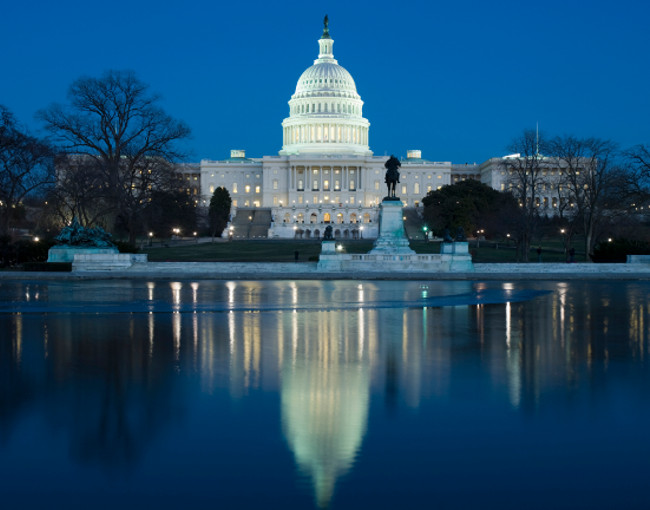On December 21, 2020, Congress passed the Consolidated Appropriations Act of 2021, a $2.3 trillion spending bill that combines a $1.4 trillion omnibus appropriations bill for federal fiscal year 2021 (“Omnibus”) with $900 billion in supplemental appropriations to provide relief for the COVID-19 pandemic (“COVID IV”). The legislation was signed into law on December 27, 2020.
Below, we provide a brief overview of the provisions of this important legislation that would most directly concern institutions of higher education and their borrowers. We encourage institutions to consult counsel or other qualified representatives as they digest and interpret this legislation, and to be watchful for further guidance from the Department of Education.
Provisions impacting institutions of higher education
Higher Education Emergency Relief Fund
Building off models established in the CARES Act, COVID IV adds an additional $81.88 billion to the Education Stabilization Fund. About $23 billion of the Education Stabilization Fund is allocated to the Higher Education Emergency Relief Fund (“HEERF”).
Allocation of COVID IV funds to institutions
Unlike the CARES Act, COVID IV distinguishes between public institutions, private, non-profit institutions, and private, proprietary institutions. Public and private, non-profit intuitions are allocated about $20 billion, and private, proprietary institutions are allocated about $681 million. Each are apportioned according to the following formula:
- 37.5% based on the institution’s share of full-time equivalent enrollment of students who were Pell Grant recipients and who were not enrolled exclusively in distance education courses prior to the qualifying emergency;
- 37.5% based on the institution’s share of the total number of students who were Pell Grant recipients and who were not enrolled exclusively in distance education courses prior to the qualifying emergency;
- 11.5% based on the institution’s share of full-time equivalent enrollment of students who were not Pell Grant recipients and who were not enrolled exclusively in distance education courses prior to the qualifying emergency;
- 11.5% based on an institution’s share of the total number of students who were not Pell Grant recipients and who were not enrolled exclusively in distance education courses prior to the qualifying emergency;
- 1% based on institution’s share of full-time equivalent enrollment of students who were Pell Grant recipients and who were enrolled exclusively in distance education courses prior to the qualifying emergency; and
- 1% based on the institution’s share of the total number of students who were Pell Grant recipients and who were enrolled exclusively in distance education courses prior to the qualifying emergency.
COVID IV also allocates about $1.7 billion for Historically Black Colleges and Universities and Minority Serving Institutions and about $113 million in emergency supplemental aid for institutions with the greatest unmet needs.
Allowable uses of COVID IV funds received by institutions
Public and private, non-profit intuitions are able to use COVID IV funds to cover qualified institutional costs, as well as for financial aid grants to students. Private, proprietary institutions are only able to use COVID IV funds to provide financial aid grants to students.
For public and private, non-profit intuitions, the range of qualified institutional costs is broader than contemplated under the CARES Act. They are able to use COVID IV funds to:
- Defray expenses associated with coronavirus (i.e., lost revenue, reimbursement for expenses already incurred, technology costs associated with a transition to distance education, faculty and staff trainings, and payroll); and/or
- Carry out student support services authorized by the Higher Education Act that address needs related to coronavirus.
All institutions are able to use COVID IV funds to:
- Provide financial aid grants to students (including students exclusively enrolled distance education), which may be used for any component of the student’s cost of attendance or for emergency costs that arise due to coronavirus (e.g., tuition, food, housing, health care, mental health, and child care). In making financial aid grants to students, an institution of higher education shall prioritize grants to students with exceptional need, such as students who receive Pell Grants.
Similar to the CARES Act, COVID IV funds are not able to be used to:
- Fund contractors for the provision of pre-enrollment recruitment activities;
Marketing or recruitment;
- Endowments;
- Capital outlays associated with facilities related to athletics, sectarian instruction, or religious worship;
- Senior administrator or executive salaries, benefits, bonuses, contracts, and incentives;
- Stock buybacks, shareholder dividends, capital distributions, and stock options; or
Any other cash or other benefit for a senior administrator or executive.
Institutions receiving COVID IV funds are required to “provide at least the same amount of funding in emergency financial aid grants to students as was required to be provided under” the CARES Act. While this language may need to be clarified by further guidance, it will likely require a percentage of funds to be used for student financial aid.
Unspent CARES Act funds
Under COVID IV, an institution of higher education that still has unspent institutional funds that it received under the CARES Act is permitted to spend those remaining institutional funds in accordance with the expended, allowable uses under COVID IV explained above, as long as at least 50% of the total CARES Act funds the institution received are still used for financial aid grants to students. Based on a plain reading of the legislative language, it appears this flexibility is available to all types of institutions (i.e., public institutions, private, non-profit institutions, and private, proprietary institutions). But private, proprietary institutions may wish to refrain from exercising this flexibility until confirmation of this interpretation is received from the Department.
Continued payment to employees
An institution of higher education that receives COVID IV funds is, to the greatest extent practicable, required to continue to pay its employees and contractors during the period of any disruptions or closures related to coronavirus.
Paycheck Protection Program
COVID IV extends the Paycheck Protection Program and allocate an additional $284.5B. Along with first time borrowers, institutions who previously received PPP loans are eligible for a second draw loan of up to $2 million if they have fewer than 300 employees and can prove that their revenue has fallen by 25%. Loan forgiveness is also available if certain conditions are met.
Student Financial Assistance
FAFSA and Pell Grants
The Omnibus simplifies the Free Application for Federal Student Aid, revising the form to cut the number of questions from 108 to no more than 36 and making those question more accessible for students and families.
The Omnibus also simplifies Pell Grant eligibility, increase the maximum Pell Grant amounts by $150, broaden the students eligible for Pell Grants (including restoring Pell Grants for incarcerated students), and provides institutions increased flexibility in exercising professional judgment during a qualifying emergency.
Federal Supplemental Educational Opportunity Grant and Federal Work Study
Finally, the Omnibus provides a $15 million increase to the Federal Supplemental Educational Opportunity Grant program and an extra $10 million for Federal Work Study.
Thompson Coburn will be monitoring the implementation of these provisions closely, and expects to provide updates as additional information becomes available. Postsecondary institutions with questions regarding the impact of the Omnibus or COVID IV on higher education are welcome to contact the authors of this blog post.
Aaron Lacey is the leader of Thompson Coburn’s Higher Education practice, host of the Firm’s popular Higher Education Webinar Series, and editorial director of REGucation, the Firm’s higher education law and policy blog. Chris Murray is the co-chair of Thompson Coburn’s Lobbying & Policy practice group, and has been recognized for the depth of his knowledge of education policy, which spans all corners of education, from pre-K through primary, secondary, and postsecondary, from institutions and trade associations to technology companies and investors. Scott Goldschmidt is the former Deputy General Counsel for a prominent institution of higher education, and a member of the firm’s Higher Education practice.
Click here to subscribe to News & Insights from Thompson Coburn related to our practices as well as the latest on COVID-19 issues.













